Lost Dials of the UK...
I - Bletchley Park in Buckinghamshire
is renowned today for the role it played in code breaking during WW2. The
original mansion remains an interesting example of Victorian architecture to this day. This
architectural style was decidedly out of favour in
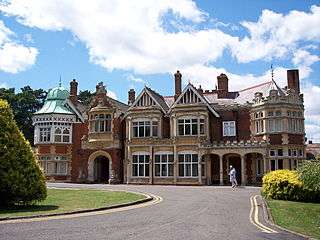 the middle of the
twentieth century, and it was even dismissed as an eyesore by wartime members of
staff working there. Indeed, the American architect Landis Gores, himself
a one time member of the staff at Bletchley Park and a decided 'modernist' in
his architectural views once
condemned it as:
the middle of the
twentieth century, and it was even dismissed as an eyesore by wartime members of
staff working there. Indeed, the American architect Landis Gores, himself
a one time member of the staff at Bletchley Park and a decided 'modernist' in
his architectural views once
condemned it as:
. . . a maudlin and monstrous pile probably unsurpassed, though not for lack
of competition, in the architectural gaucherie of the mid-Victorian era . .
hopelessly vulgarised by extensive porches and solaria as well as by batteries
of tall casements in intermittent profusion . . . altogether inchoate, unfocused
and incomprehensible, not to say indigestible.
Thankfully we do not all see it that way today. Moreover
to its credit, the mansion did at one time have a sundial! It was a stone vertical dial
mounted at first floor level on the South facade under a gablet. Sadly,
when the library extension was added around 1906 the dial was removed and
replaced by a window. The image below shows how the dial looked around the
turn of that century. It was a Direct South dial (or very nearly so), oddly
with some lines of delineation above the horizon line. The really
interesting aspect though is the motto. This read Hora Fugit.
A motto that is actually quite rare in the UK; only four or five such being known
on dials today.
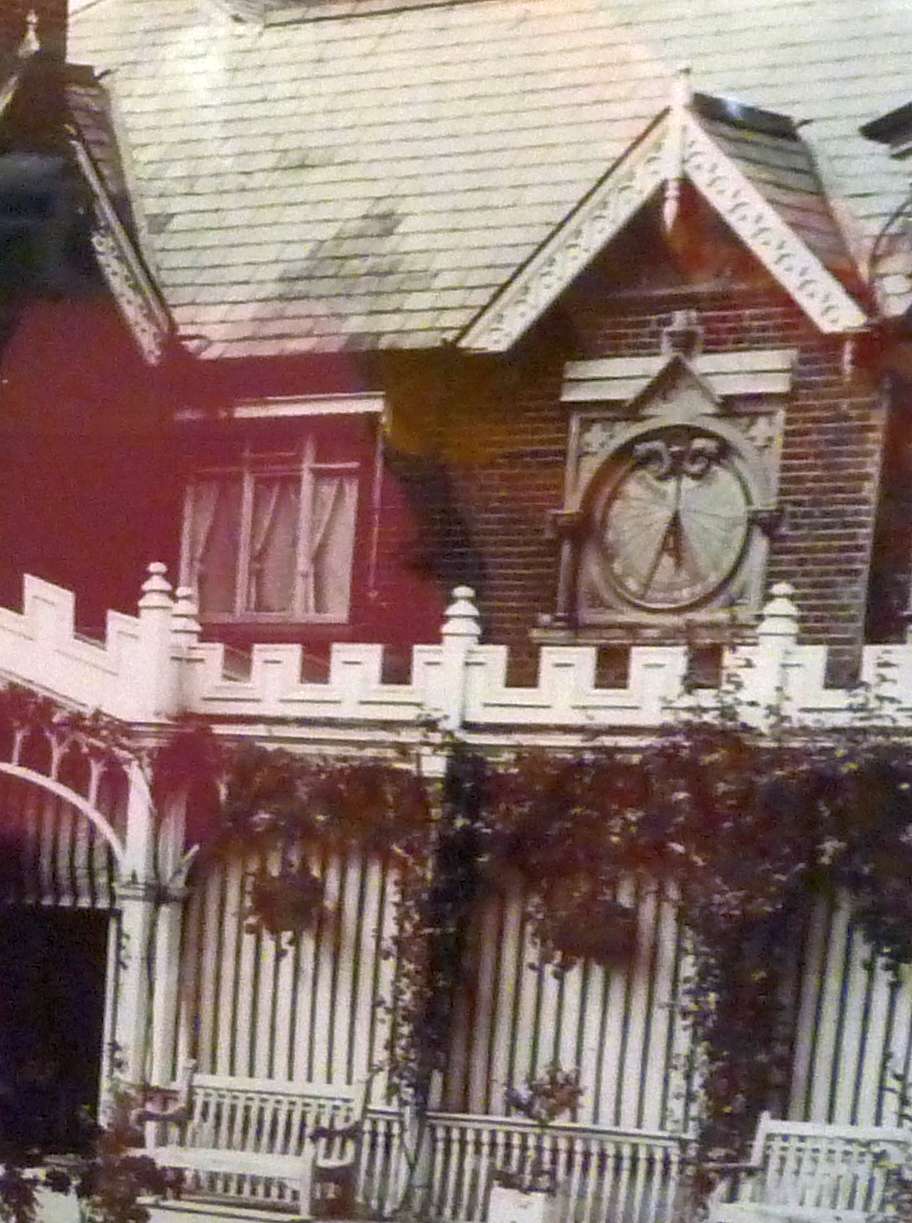
II - The Dial Stolen from Polesden Lacey
This wonderful bronze dial, 590 mm in diameter, was displayed in
the grounds of the (now) National Trust owned property Polesden Lacey,
near Dorking. The house is famous for being used in 1923 for two weeks by the
honeymoon couple who were later to become King George VI and Queen Elizabeth.
Sometime in the 1990s the dial was ripped from its capital and stolen;
presumably for its scrap value because it has never been recovered.
Believed to be by Harris it declared a design Latitude of 51 deg 20min N. It
had a Watch Faster/Slower equation of time scale, times in the range 4am to
8pm in 30, 15, 10, 5 and 1 min intervals. Quarter and half hours were in a ring
inside the numerals. with ten, five and one min marks on the outer edge.
Lozenge half hour markers, using full lines, were placed between the numerals. Two
scrolls were placed at the South ends of the chapter ring. There was a small chip out of
the edge near 4am. The whole
was mounted on a stone circular base in 2 tiers approximately 930 and 750mm in
diameter and supported by a
wrought iron bracket holding 2 cherubs. A thinner and much less remarkable
plate of bronze has since been placed on the undamaged cherub pedestal. The pictures here
were taken in July 1990 © P.Powers 1990.
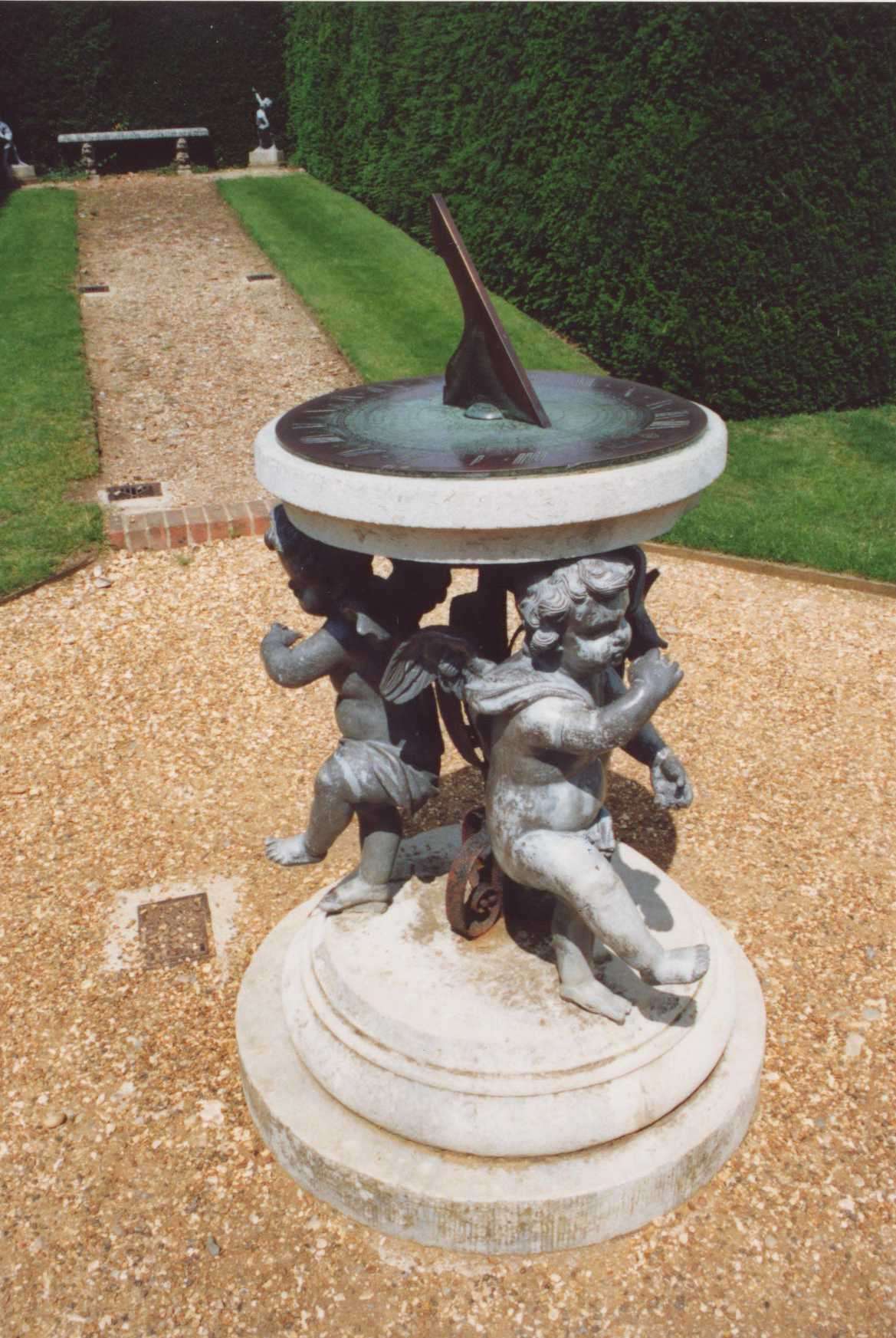
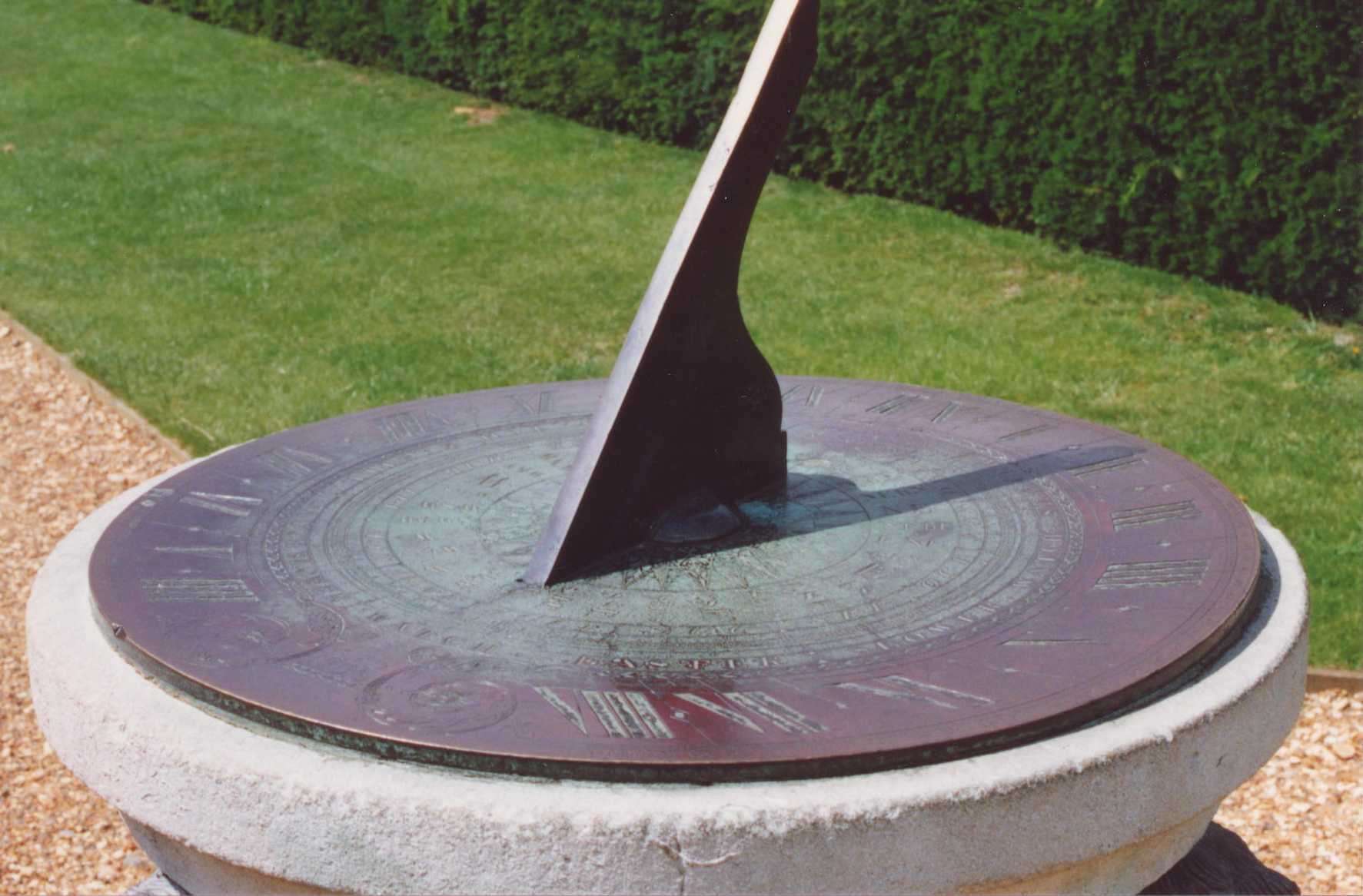
III - The Dial at the Parish Church of Kirkby
Stephen in Cumbria. Perhaps oddly this church does not have any
dedication though one might presume that St Stephen would have been in the
running had one been considered! There is a sad story about this dial because it was reported to have
completely disintegrated in 1992 when taken down for repairs. Now lost with no
remnants, not even the gnomon being used for a repair, a restoration or a
replica. A plaque at the base named the church wardens at the time that it was
installed as T Islip, A Wmson (?Williamson), A Dixon and T Railton. It
seems to have measured around 700mm wide x 1300mm high. A
single convex gnomon supporter was an unusual feature too; though that might
have been a strengthening device. Over tight iron cleats are
thought to have contributed to the damage and the dial plate was cracked even when
in situ. The motto "Dum Spectas Fugio" was engraved in the break-arch though
with scrolls to each side. It showed 6am to 6pm in half hours. Numerals are not
visible in this image owing to spalling. However ghost images of VI and VIII are
just discernible. A plaque above the dial gave the then Vicar's name as (The)
Hon Rycroft AM St John's Coll Cambridge.
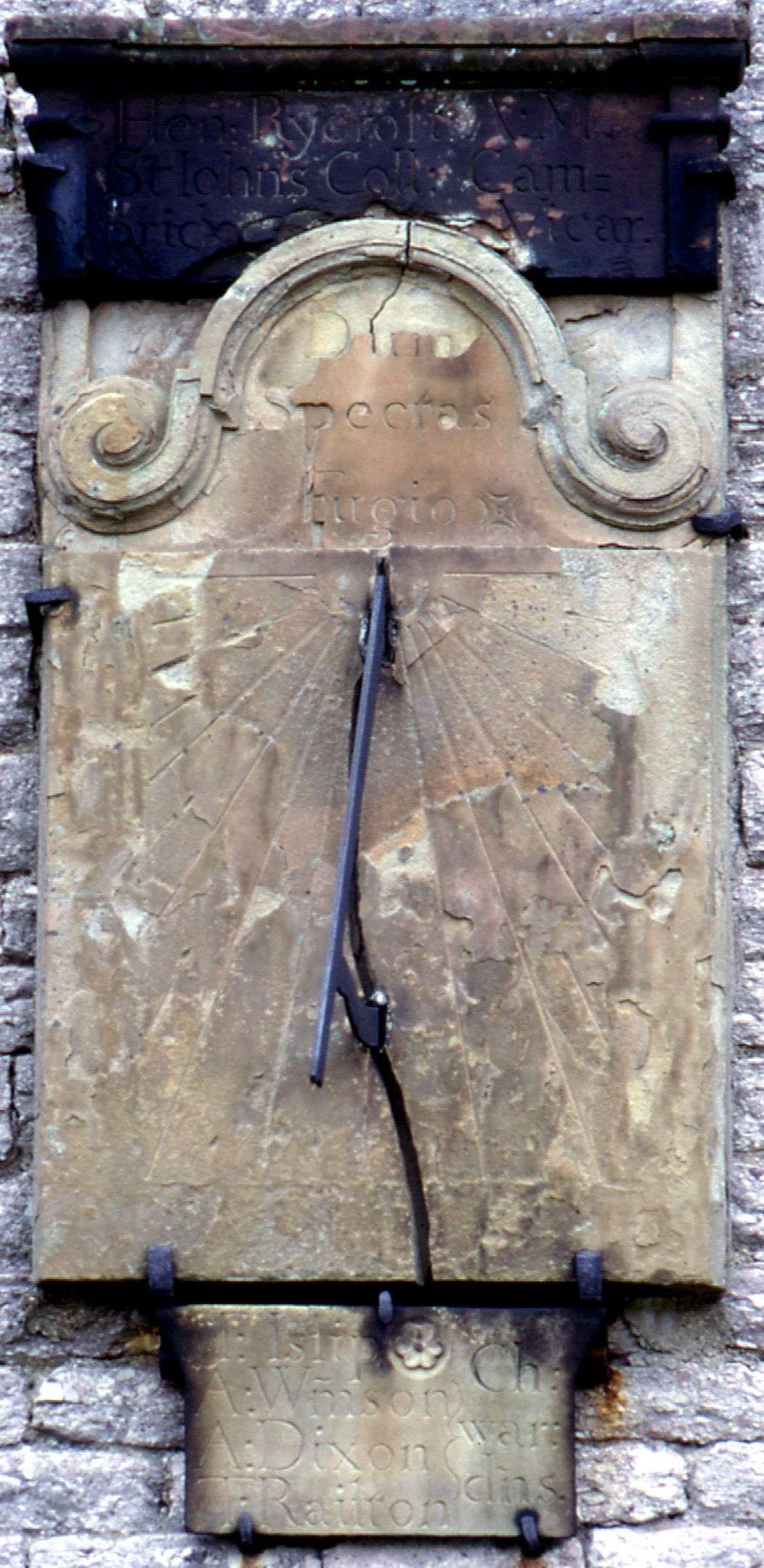
IV - The dial at St John the Baptist's Church,
Stokesay, Shropshire. This is another dial that broke into pieces when
being removed for restoration and was regretfully scrapped. However a
replacement was constructed in 1999 though sadly without re-using the original
gnomon or duplicating the construction of the original despite watercolours of
it still existing. A dial is known to have been on this church since
before 1789 but the one we talk of as 'original' and shown on the left below
dated from around 1825. Maybe the gnomon on this dial wasn't 'original'
- it does look rather primitive - but in any case to many eyes the replacement
gnomon is too thin and the dialplate is somehow rather too simple and can be hard to
read from the ground. The replacement is engraved whereas it is
thought that the earlier one was painted. The dials both decline 5 degs E.
The new one is supported on the original corbels and shows 6am to 5pm in half
hours.
© P.Powers 2000
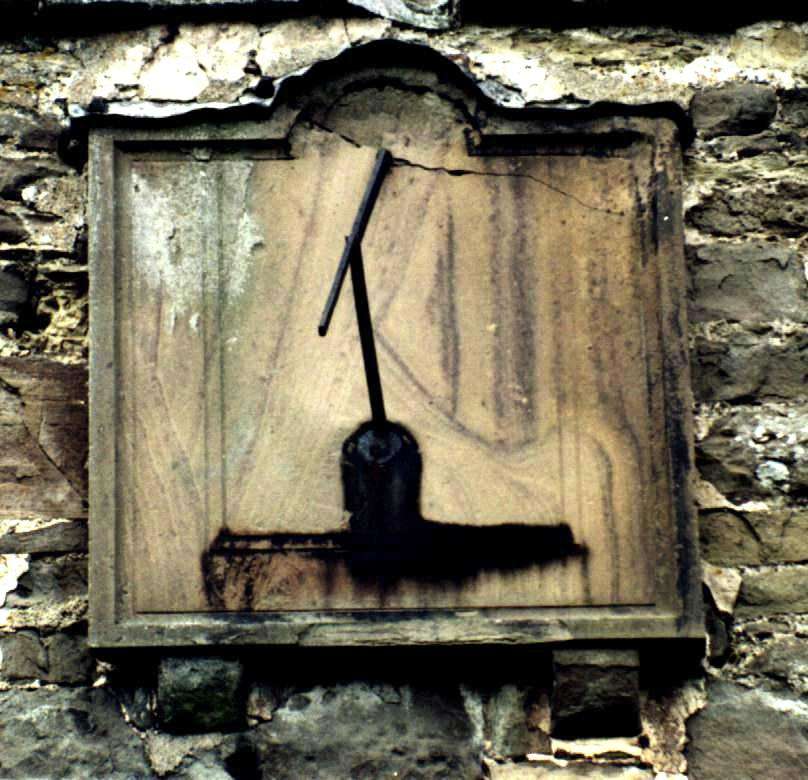
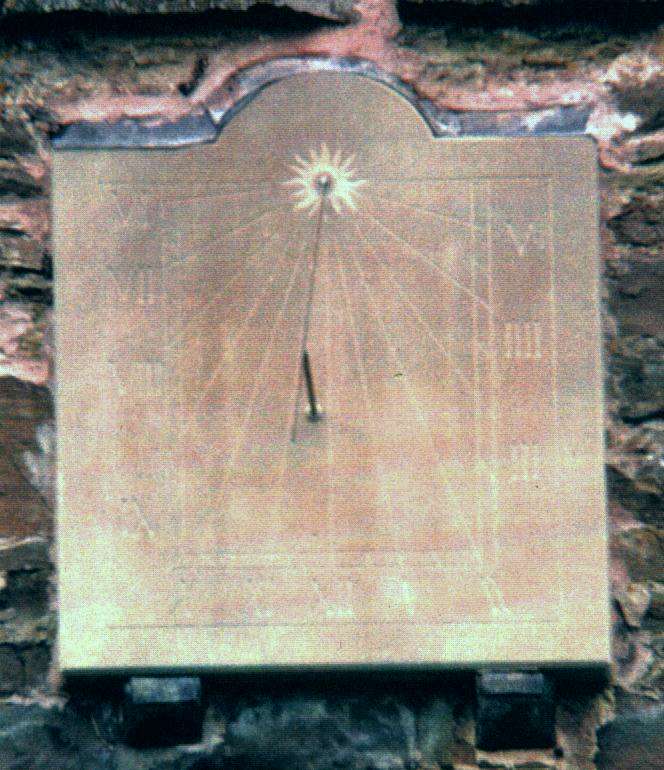
[Back]
 the middle of the
twentieth century, and it was even dismissed as an eyesore by wartime members of
staff working there. Indeed, the American architect Landis Gores, himself
a one time member of the staff at Bletchley Park and a decided 'modernist' in
his architectural views once
condemned it as:
the middle of the
twentieth century, and it was even dismissed as an eyesore by wartime members of
staff working there. Indeed, the American architect Landis Gores, himself
a one time member of the staff at Bletchley Park and a decided 'modernist' in
his architectural views once
condemned it as:




